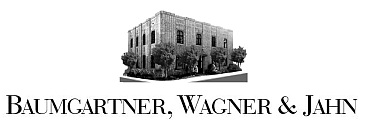It will come as no surprise that when there is a crash between a cyclist and a vehicle, the cyclist is the most likely to be injured. According to Centers for Disease Control and Prevention, in 2015 over 1,000 bicyclist died and there were almost 467,000 bicycle-related injuries in traffic crashes.
Common Types of Bicycle Accidents
Pull Out. One common type of intersection accident is when a car on a side street pulls up to a main street on which a bicyclist is riding with the right-of-way. The motorist either does not see the bicyclist or underestimates the bicycle’s speed and pulls out into the street, colliding with the bicyclist. In this scenario, the motorist is liable for failing to keep a proper lookout and failing to yield the right-of-way, the same as if the accident involved two cars.
Right Turn. Another common scenario of an intersection accident is when a car is making a right turn at an intersection. The motorist either fails to see a bicyclist on the motorist’s right, or having passed the bicyclist earlier underestimates the bicyclist speed, and turns into the bicyclist. Here, the motorist may be liable for failing to keep a proper lookout and under a Washington statute that requires motorists to keep a safe distance until safely clear of the bicyclist.
Left Turn. A bicycle traffic accident may also result when a motorist makes a left turn in front of an oncoming bicyclist traveling in the opposite direction. The motorist either does not see the bicyclist or underestimates the bicycle’s speed, resulting in a collision. Here, as would be the case if two motor vehicles were involved, the left turning motorist would be negligent for failing to yield the right-of-way and failing to keep a proper lookout.
Tips for Motorists
Motorists must share the road. Bicyclists have the same rights and responsibilities as any other vehicle drivers on the road.
- Do not underestimate a bicyclist’s speed. Yield to them like you would other vehicles.
- When turning right on red, look both to your right and behind to avoid hitting a bicyclist approaching from behind on your right.
- Do not pass bicyclists too closely. Pass them as you would any other vehicle, only when you can safely move into an adjacent lane.
Tips for Bicyclists
Wearing a helmet is the most important bicycle safety tip. Helmets are required in Vancouver, Washington, for anyone riding on a bicycle.
The NHTSA gives these additional tips before heading out on a bicycle ride:
- Ride a bike that fits and works. Bikes that are too big are harder to control. Bikes without working brakes are even harder.
- In addition to wearing a helmet, wear reflective gear, with a white front light, red rear light and side reflectors.
- Chose routes with less traffic, slower speeds, and preferably with a bike lane or bike path.
While on your ride:
- Ride with the flow and in the same direction as traffic.
- Obey all traffic control signs and signals.
- Assume that motorists don’t see you. Ride predictably and where you would be expected to be seen.
- Look ahead for hazards or situations to avoid that may cause you to fall or veer into traffic.
- Avoid riding on sidewalks. Motorists do not expect bicyclists on sidewalks. If you have to ride on a sidewalk, give pedestrians warning you before passing them and pass with care.
What to do When in a Bike Accident With a Vehicle
It is usually a good idea to call the police if you are in an accident. This makes it less likely that stories will change down the road.
As is the case with all motor vehicle accidents, get the other driver’s insurance information, address, phone number and license plate number. If there are witnesses on the scene, get their contact information as well.
Don’t admit fault. Don’t minimize your injuries or the damage to your bike.
Do not hesitate to seek medical care for any injuries. In Washington State, if the motorist has personal injury protection (PIP) coverage, that coverage is primary and should pay for treatment of the bicyclist’s injuries regardless of who was at fault for the collision. If the motorist’s auto policy does not have PIP coverage, but the bicyclist’s auto policy does, the bicyclist’s PIP coverage is secondary and should pay the bills. The cyclist own health insurance is third in line with coverage.
